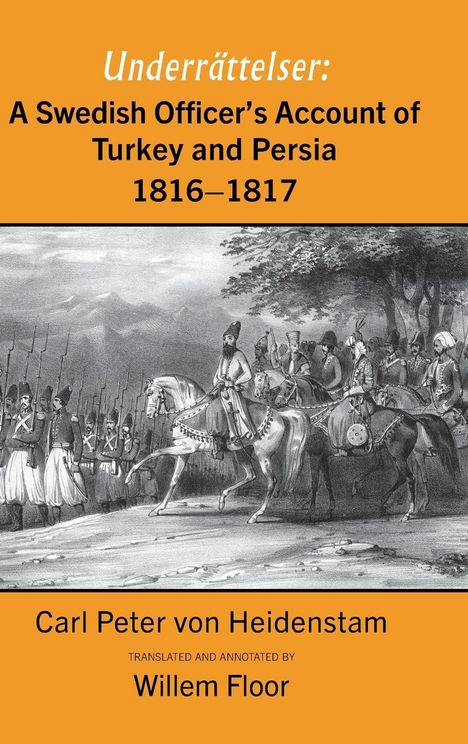Carl Peter von Heidenstam: A Swedish Officer's Account of Turkey and Persia, 1816-1817, Gebunden
A Swedish Officer's Account of Turkey and Persia, 1816-1817
(soweit verfügbar beim Lieferanten)
- Verlag:
- Mage Publishers, 06/2025
- Einband:
- Gebunden
- Sprache:
- Englisch
- ISBN-13:
- 9781949445923
- Artikelnummer:
- 12324704
- Umfang:
- 196 Seiten
- Gewicht:
- 464 g
- Maße:
- 240 x 161 mm
- Stärke:
- 15 mm
- Erscheinungstermin:
- 17.6.2025
- Hinweis
-
Achtung: Artikel ist nicht in deutscher Sprache!
Klappentext
First published in Swedish in 1825 and never before translated into English, Carl Peter von Heidenstam's Nägra Underrättelser... occupies a unique place among early nineteenth-century European writings on the Ottoman Empire and Qajar Iran. Far from a conventional travelogue, the text offers a concise, analytically structured account of governmental, military, and religious institutions in both empires, based on the author's direct service in Istanbul and in the reformist army of Crown Prince ¿Abb¿s M¿rz¿.
Von Heidenstam, a Swedish officer and diplomat with deep familial and professional ties to the Ottoman world, eschews anecdotal narrative in favor of institutional description and comparative analysis. Drawing on both his own observations and those of fellow European officers, he presents a critical yet informed overview of two political systems confronting the pressures of modernization, internal reform, and shifting international dynamics. His account-published anonymously in its first edition and reissued in 1841 under his name-remains an unexamined source within Ottoman and Iranian studies.
This first English edition includes a critical introduction, translator's notes, and a comprehensive index. It aims to make accessible a work of considerable value to historians of empire, diplomacy, and reform in the Middle East. Von Heidenstam's concise, methodical prose provides scholars with a rare early nineteenth-century European perspective grounded in lived experience rather than literary convention, and thus offers important insight into the administrative and ideological landscapes of the Ottoman and Qajar states.


